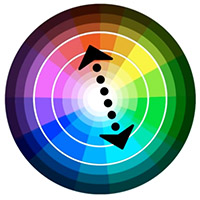Video: 5 things you need to know about editing color in Adobe Lightroom and Adobe Camera Raw
posted Tuesday, August 16, 2022 at 10:15 AM EDT

For the many photographers who edit their raw images in Adobe Lightroom and Adobe Camera Raw, how to approach color editing can be confusing. You can use many tools, including Hue/Saturation/Lightness sliders (Color Mixer), global saturation and vibrance sliders, Color Grading tools, and Calibration tools. As outlined by Blake Rudis of f64 Academy in a recent video, the Calibration tools in Lightroom and ACR are much more useful than people often realize. By default, the tools are at the bottom of a long list, so it's easy to think they're not as useful for most images. However, Rudis argues that Calibration – which he has moved near the top of his workspace – is a better way to adjust the saturation in your photos.
After making basic adjustments, like white balance and exposure, the next step in Rudis's workflow is Calibration. What is Calibration, and how does it work? Even on Adobe's website, there's not much information about Calibration. If you watch photo editing workflow tutorials, not many people use Calibration. At its core, Calibration targets the presence of red, green, or blue pixels in the overall colors of your image. For example, if you increase red saturation in Calibration, not only do pure red pixels change, but any colors with red values also change, like magenta, purple, and orange. Even in green, which doesn't look red, there is red pixel information, so the intensity changes when you adjust red saturation. This differs from the HSL sliders, which don't target pixel-level color but instead target perceptual color in your image.
What this means for your photos is that if you pump up blue saturation in the Color Mixer section using HSL sliders, the results can be blocky, unnatural, and create harsh transitions if you aren't careful. You're targeting a specific color range so the transitions can be abrupt. If you increase the blue saturation in Calibration, the results, as shown in the video below, are much smoother and more natural. Nearly all colors are being adjusted in the image, but there's a gradation of effect, with it being strongest with blue pixels and then tapering off to complementary colors. The takeaway is that the next time you want to increase the intensity of certain colors in your image, give the Calibration tools a try before using the HSL sliders in the Color Mixer panel.
Another tip is about when you should do color grading in your photo editing workflow. Color grading allows you to precisely add a specific color tone to different tonal values in your image. For example, you can make shadows bluer, midtones more orange, and highlights yellower. With Adobe's tools, you can dial in color and intensity while adjusting the luminance values at which shadows become midtones and midtones become highlights. It can be tempting to do this early on in the editing process, but Rudis argues that you should do color grading after you've done all other editing tasks.
To see the other three color editing tips for raw images, watch Rudis's full video below. One of his tips is about presets. If you'd like to learn more about his Chroma presets, click here. To see more from Blake Rudis, visit his YouTube channel and the f64 Academy website.
(Via f64 Academy)